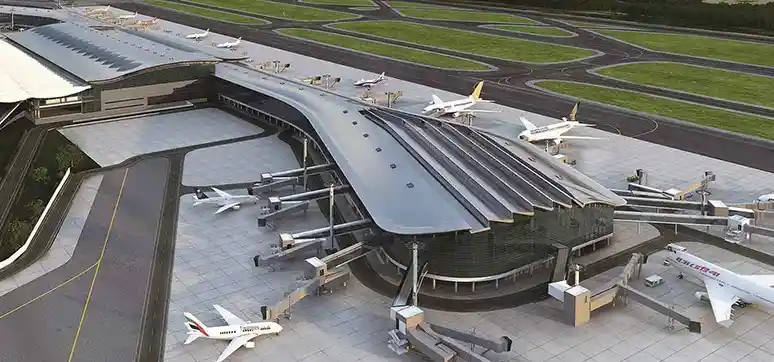Rajiv Gandhi International Airport

Rajiv Gandhi International Airport, located in Shamshabad, Hyderabad, is a premier gateway for both domestic and international travelers. Since its inauguration on March 23, 2008, the airport has revolutionized air travel in the region, replacing the old Begumpet Airport. Named after the former Prime Minister of India, Rajiv Gandhi, the airport spans 5,500 acres, making it one of the largest in the country. This state-of-the-art facility is operated by GMR Hyderabad International Airport Limited (GHIAL), a private-public consortium, and is one of the busiest airports in India.
A Leading Hub for Global Travel
As one of India’s top 10 airports, RGIA plays a critical role in connecting Hyderabad international airport connectivity to the world. It handles more than 15 international airlines and serves as a crucial transit point for millions of passengers. Ranked among the top 10 airports globally by AirHelp, RGIA manages nearly 21 million passengers annually, making it the 4th busiest airport in India. Additionally, it processes over 140,000 tonnes of cargo, proving its importance as a Hyderabad airport cargo services hub.
One of the standout features of RGIA is its cutting-edge technology. It was the first airport in India to implement e-boarding passes for both domestic and international flights, streamlining the passenger experience. This innovation, introduced in December 2015 for domestic flights and in October 2020 for international travel, has made RGIA a pioneer in passenger convenience and efficiency.
Modern Facilities and Infrastructure
RGIA boasts a world-class infrastructure designed to cater to both passengers and airlines. It features a passenger terminal, a cargo terminal, two runways, and a solar power plant that contributes to its energy needs. The airport also houses facilities for aircraft maintenance and pilot training. RGIA is a major base for prominent airlines such as Alliance Air, SpiceJet, IndiGo, and Air India. Its role in logistics is further highlighted by Amazon Air and Blue Dart Aviation, using its facilities for Hyderabad airport cargo operations.
Connectivity from the Airport
The airport’s strategic location ensures seamless connectivity to Hyderabad and beyond. Located just 24 kilometers from the city center, RGIA is well-connected via National Highways 44 and 765, as well as the Outer Ring Road (ORR). The PV Narasimha Rao Expressway, a 13 km long flyover, significantly reduces travel time to the airport, allowing passengers to reach it in as little as 30 to 40 minutes.
Public transport options include the Pushpak – Airport Liner service operated by the Telangana State Road Transport Corporation (TSRTC). This service connects passengers to key locations within the city, ensuring convenient travel to and from the airport. In addition, as part of the second phase of the Hyderabad Metro Rail project, a 31 km rail line will soon link Raidurg to RGIA, further enhancing connectivity. For those preferring rail travel, the nearest Indian Railways station, Umdanagar, is only 6 kilometers away.
Real Estate Investment Potential
The rapid development of infrastructure around Rajiv Gandhi International Airport has made the surrounding areas highly attractive for real estate near Hyderabad airport. Localities such as Kokapet and Hi-tech City are in high demand due to their proximity to the airport and ease of connectivity. Developers and investors are particularly drawn to the region, recognizing its potential as a thriving residential and commercial hub.
One prominent project is Brigade Gateway Hyderabad, a luxury residential development located near the airport. With the increasing demand for convenient living spaces, projects like these offer high returns for investors and a premium lifestyle for residents. As the area continues to grow, it will likely become one of Hyderabad’s most sought-after regions for real estate investment.
Services and Future Developments
RGIA offers a range of world-class services for travelers. From efficient check-in and baggage handling to top-tier lounges and shopping outlets, passengers can expect a smooth and enjoyable travel experience. The airport management is also committed to ongoing improvements, with plans for future expansions and upgrades aimed at enhancing capacity and services.
Conclusion
Rajiv Gandhi International Airport stands as a testament to Hyderabad’s growth and global connectivity. With its advanced infrastructure, seamless connectivity, and forward-thinking developments, it continues to play a pivotal role in both regional and international air travel. As the airport evolves and expands, it not only benefits passengers but also contributes significantly to Hyderabad’s economy and real estate market, making it an invaluable asset to the city and its future growth.